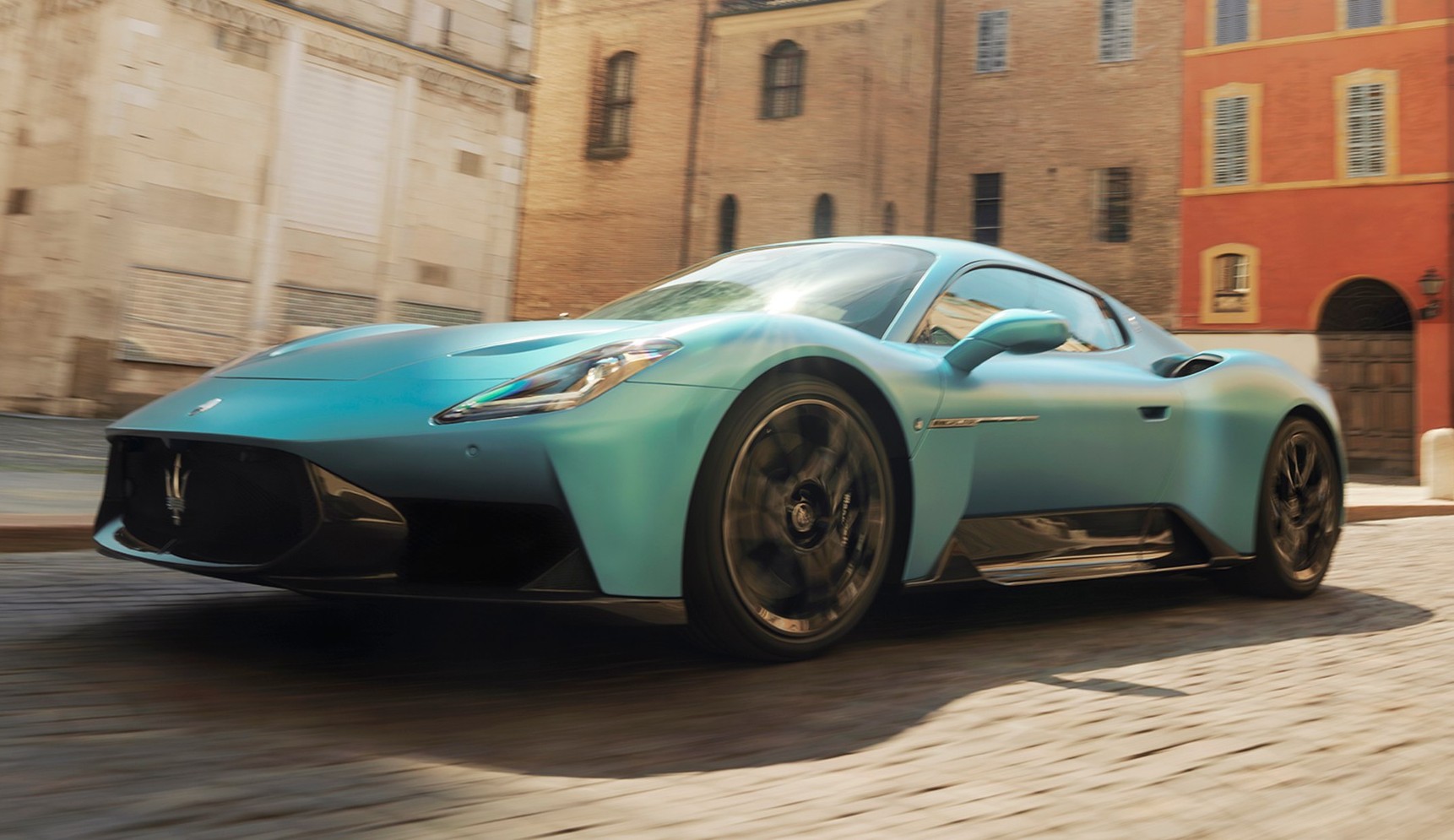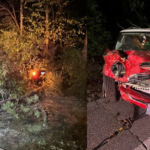News
Reviews
Buyer's Guide
Videos
What's My Car Worth?
Events
Ask MOTORTREND
It’s just as exotic as a mid-engine Ferrari or Lamborghini but costs a lot less.
See All 40 Photos
What’s in a name? In the case of the 2026 Maserati MCPURA, it doesn’t appear to be much more than new front and rear bumper facias inspired by the race-face GT2 Stradale version, a new signature color called AI Aqua Rainbow, an interior now more fully wrapped in Alcantara, and a new steering wheel. Otherwise, the MCPURA is virtually identical to the MC20, a car that when it launched in 2020 was Maserati’s first mid-engine supercar since the 1972 Merak.
0:00 / 0:00
As our 2024 track test revealed, the MC20 fell short of the more cohesive handling rivals from Ferrari and Lamborghini in terms of raw numbers. On the road, however, where you are rarely on the limits of adhesion, chasing those last few tenths of a second through a corner, we found the MC20 to be an unexpectedly likable machine. It came across as an easygoing mid-engine sports car you can drive every day, a bit like an entry-level C8 Corvette Stingray, but with bodywork that’s more Michelangelo than Motown.
Not unexpectedly, perhaps, the MCPURA has the same character. Whether you choose the fixed-head coupe or retractable hardtop Cielo convertible model, this Maserati is a supercar with a smidgen of grand tourer thrown into the mix. It’s cut-and-thrust quick when you want it to be and calm and relaxed when you need it to be.
See All 40 Photos
A quick technical recap: The MCPURA is powered by the dry-sumped version of Maserati’s acclaimed 90-degree 3.0-liter twin-turbo Nettuno V-6. The engine develops 621 horsepower at 7,500 rpm and 538 lb-ft of torque, peaking from 3,000 rpm to 5,500 rpm, and drives the rear wheels through an eight-speed dual-clutch transmission.
Its chassis utilizes a central carbon-fiber monocoque with aluminum structures bolted at either end to anchor the front suspension, steering components, rear suspension, V-6 engine, and transmission assembly. The monocoque was designed from the outset to facilitate a convertible version with only minor tweaks. As a result, the MCPURA Cielo weighs just 259 pounds more than the coupe, the extra weight mostly due to the retractable glass roof and the mechanisms that stow and retrieve it from a compartment above the engine.
The Cielo’s compact multilink suspension and Brembo carbon-ceramic brakes are also shared with the coupe, but the stiffness of the rear suspension has been increased slightly to account for the extra mass of the roof on the rear axle. The convertible’s e-diff has also been recalibrated to be less reactive, easing the load on the steering.
See All 40 Photos
Maserati offers four drive modes (Wet, GT, Sport, and Corsa) for the MCPURA, the latter of which is only activated if you twist and hold the large rotary controller on the center console for a few seconds. You need to perform said twist and hold in large part because Corsa mode switches off the stability control.
Two shock settings are available in each mode. There's soft and mid in Wet and GT, with soft being the default setting; soft and mid in Sport setting, with mid being the default setting; and mid and hard in Corsa, with hard being the default setting. The settings are changed via a swipe across the glass touchscreen surface of the rotary controller on the center console. A separate button on the center console allows you to switch the transmission between automatic and manual in all modes.
See All 40 Photos
Inside, the MCPURA’s forms and features are largely unchanged from the MC20, with a clean and simple approach. The seats, dash, and doors are now all swathed in Alcantara, which not only reduces glare but is also lighter than leather. Visual interest is enhanced by the use of laser-made cuts in the material that can reveal contrasting colors underneath. The flattened top of the new steering wheel improves the view of the road ahead without compromising the sight lines of the configurable instrument panel.
The low center console has a mere handful of buttons: a rotary audio controller and power window switches to the rear, reverse gear and drive/manual shift selector buttons midway along, and the large rotary controller that allows the driver to switch between drive modes. One button we’d like to see added in the Cielo is one that opens and closes the roof, rather than having the function hidden away in the central touchscreen menu. Although the roof takes just 12 seconds to deploy, you can spend almost that long swiping and stabbing at the screen to make it happen.
See All 40 Photos
Maserati claims the MCPURA will sprint from 0 to 60 mph in 2.9 seconds en route to a top speed of 202 mph. But given that the MC20 Cielo we tested last year took 3.5 seconds to get to 60 on the way to posting a quarter mile of 11.7 seconds at 124.7 mph, we’ll take that claim with a pinch of salt until we’re able to put the MCPURA through our full range of performance tests.
Numbers aside, the MCPURA feels exceedingly quick on the road, helped by the well-spaced gearing of its quick-shifting eight-speed transmission, and the strong, linear power delivery of the Nettuno V-6, which emits a menacing snarl once you get it zinging above 4,000 rpm (a good thing, too, because at low revs on light throttle it sounds like a walrus gargling a gallon of bourbon). Will it hang with an expertly driven Ferrari 296GTB on a mountain road? No. But nobody’s going to be thinking about that when they watch you pull into valet parking. Look! It’s a mid-engine Maserati!
The MCPURA Cielo is similarly light on its feet, especially in terms of steering response and lateral acceleration through a series of corners. But it doesn’t always feel light under foot: It takes a surprisingly big stomp on the brake pedal to wake up the Maserati’s Brembos when they’re cold. So much so that the first time you rush into a corner at speed and brush the brake pedal without some heat in the carbon-ceramic rotors, you wonder for a split second whether you’re going to get the car slowed in time.
See All 40 Photos
What’s in a name? Yes, the MCPURA is essentially a face-lifted MC20. But there is perhaps some deeper meaning in the new nomenclature. The MC20’s chassis architecture was originally designed to accommodate an electric powertrain with electric motors at the front and rear axles and active torque vectoring. But the electric Maserati supercar, originally scheduled to appear in 2022, has been quietly shelved for good. What’s more, Maserati sources say they are working on ensuring the Nettuno V-6 can stay in production until the mid-2030s without the need for hybridization to further reduce emissions. Maserati’s mid-engine supercar will thus arguably have (ahem) a purer sports car powertrain than its hybrid rivals.
The MCPURA will be built in limited numbers, as production at the storied Maserati factory at Viale Ciro Menotti in Modena—where Maseratis have been built for more than 80 years—is limited to about 1,700 cars a year. The first MCPURAs are scheduled to arrive in the U.S. in December with prices starting at $246,000 for the coupe and $281,000 for the Cielo. Sure, that’s a lot more money than you’ll spend on any C8 Corvette, new ZR1 included. But if you want an exotic Italian mid-engine supercar, in the context of the $333,000 Ferrari now charges for the 296GTB and the $389,000 Lamborghini is asking for its new Temerario, the Maserati MCPURA starts to look like a bit of a bargain.
See All 40 Photos
2026 Maserati MCPURA Specifications
PRICE
Coupe: $246,000; Cielo: $281,000 (mfr)
LAYOUT
Mid-engine, RWD, 2-door, 2-pass coupe
ENGINE
3.0L/621-hp/538-lb-ft DOHC 24-valve twin-turbo V-6
TRANSMISSION
8-speed twin-clutch auto
CURB WEIGHT
Coupe: 3,600 lb; Cielo 3,900 lb (MT est)
WHEELBASE
102.4 in
L x W x H
183.7 x 77.5 x 47.8 in
0-60 MPH
2.9 sec (MT est)
EPA FUEL ECON, CITY/HWY/COMB
N/A
EPA RANGE (COMB)
N/A
ON SALE
Now
I can’t remember a time when I wasn’t fascinated by cars. My father was a mechanic, and some of my earliest memories are of handing him wrenches as he worked to turn a succession of down-at-heel secondhand cars into reliable family transportation. Later, when I was about 12, I’d be allowed to back the Valiant station wagon out onto the street and drive it around to the front of the house to wash it. We had the cleanest Valiant in the world.
Read More
Join Newsletter
Subscribe to our newsletters to get the latest in car news and have editor curated stories sent directly to your inbox.
Explore Offerings
A Part of Hearst Digital Media
©2025 Hearst Autos, Inc. All Rights Reserved.
Report Issue
Cookie Choices
Follow us
Load More












